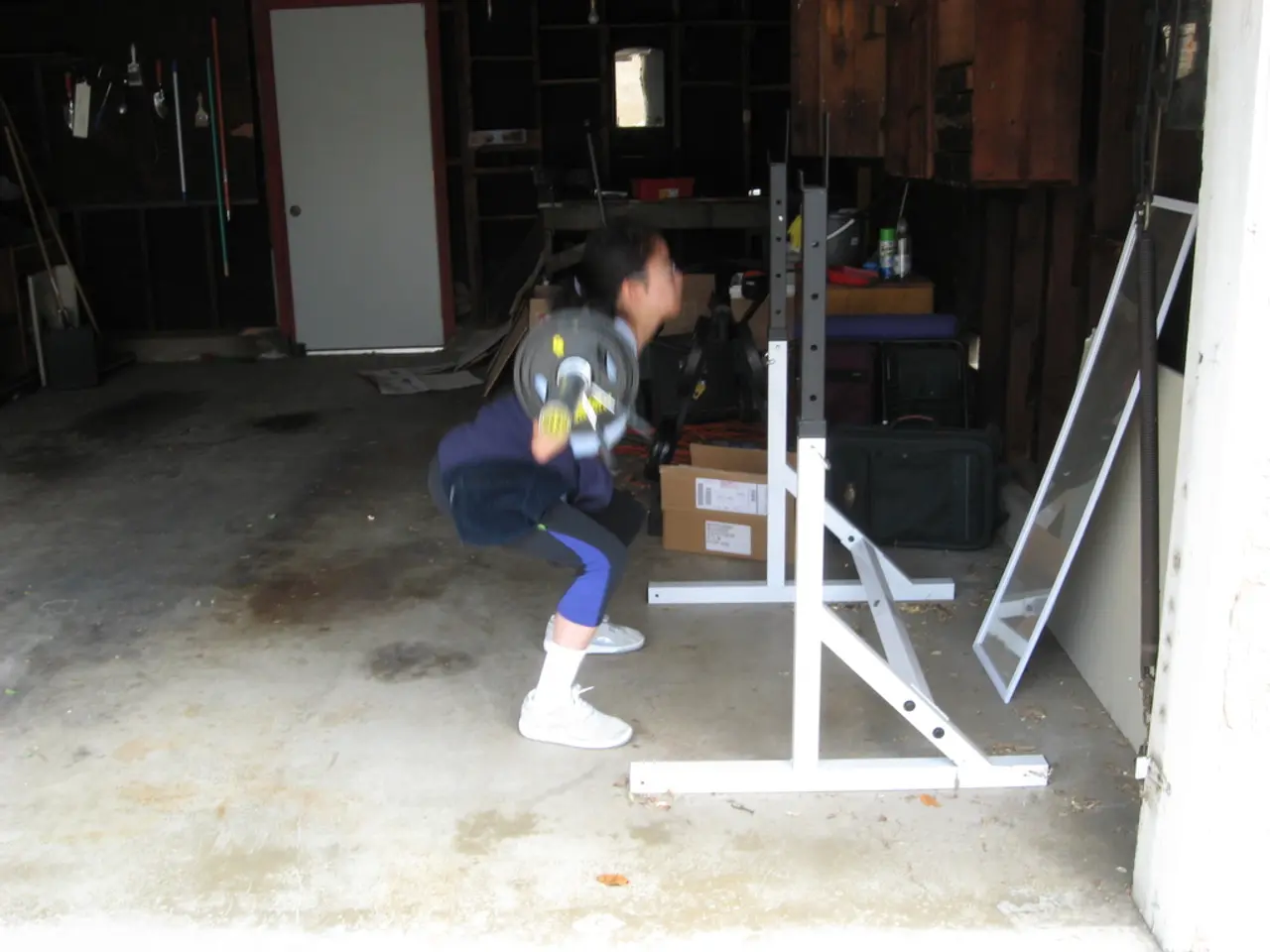Strategic Pauses in Rest-Pause Training: Exploring the Science Behind Timed Breaks During Workouts
In the world of fitness, pushing beyond limits is a constant pursuit. One technique that's gaining popularity is rest-pause training, a strength and hypertrophy method that promises to take your workouts to the next level.
Rest-pause training involves performing a set to near failure, followed by a short rest (usually around 10 to 20 seconds), and then continuing with additional reps until failure once more. This cycle can be repeated multiple times within one set, allowing for a greater volume and fatigue than traditional sets.
### How Rest-Pause Training Works
The process is simple yet effective. You perform a set of repetitions near failure, take a brief rest pause, continue with more reps until failure again, and repeat as desired for enhanced muscle stimulus.
### Benefits for Strength and Hypertrophy
This innovative training technique offers several advantages. By breaking a single set into smaller chunks with short rests, you can push more reps at a higher weight, maximising mechanical tension—one of the key drivers of hypertrophy and strength gains.
Moreover, rest-pause training prolongs muscle activation and metabolic stress, contributing to muscle fibre recruitment and growth signalling pathways. This prolonged stress can lead to improved muscular endurance and growth hormone response, supporting muscle repair and fat metabolism.
The repeated effort with minimal rest can also induce metabolic stress that promotes hypertrophy and can increase growth hormone release. This method is particularly effective for strength gains by enabling multiple near-maximal efforts in a single set with short pauses.
### Application and Key Components
Rest-pause training can be applied to virtually any exercise, though it is especially effective for compound lifts like squats, deadlifts, bench presses, and rows. To begin, select a weight that is about 80-90% of your one-rep max (1RM).
The key component of rest-pause training is the short, strategically placed rest period, which allows you to maintain higher levels of intensity throughout the entire exercise. This method maximises the number of reps performed with a given weight, thereby increasing mechanical tension and metabolic stress in the muscle.
### When to Start and Who It's For
If you're a beginner, it's recommended to build a solid foundation with traditional sets and reps before incorporating rest-pause training. However, for those looking to push past plateaus or maximise their time in the gym, rest-pause training can be a game-changer.
Start by incorporating rest-pause training 1-2 times per week, especially for compound lifts. The results speak for themselves, whether you're aiming to break through a plateau, build muscle, or simply get the most out of your gym time.
In conclusion, rest-pause training leverages brief intra-set rests to extend total work volume and fatigue, enhancing both muscle size and strength adaptations efficiently. It's a powerful tool for lifters looking to push past their limits and achieve their fitness goals.
- In the realm of fitness-and-exercise, the ongoing mission is to surpass personal limits, with rest-pause training being a popular technique that amplifies workout intensity.
- Rest-pause training consists of executing a set near failure, followed by a quick break (around 10-20 seconds), and then resuming additional reps until failure again, repeatedly for heightened muscle stimulus.
- by dividing a single set into smaller segments with brief pauses, rest-pause training enables more reps at increased weights, optimizing mechanical tension crucial for hypertrophy and strength advancements.
- Rest-pause training prolongs muscle activation and metabolic stress, stimulating muscle fibre recruitment and growth signaling pathways, leading to enhanced muscular endurance and growth hormone response.
- This method can promote hypertrophy by instigating metabolic stress that triggers growth hormone release and can be particularly effective for strength gains by facilitating multiple near-maximal efforts in a single set with short rests.
- Rest-pause training is applicable to a variety of exercises, especially compound lifts like squats, deadlifts, bench presses, and rows, and is ideal for those seeking to break through plateaus, build muscle, or optimize their health-and-wellness or sports performance.




